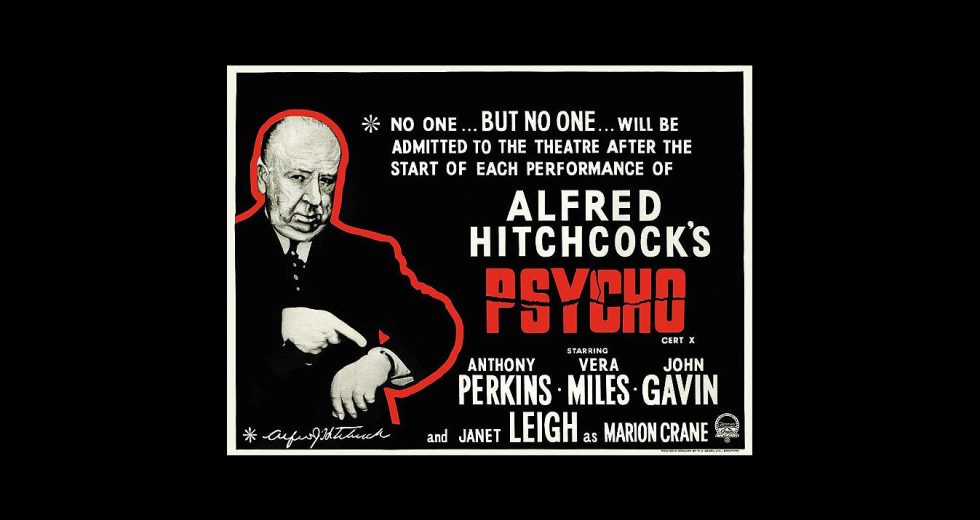
Alfred Hitchcock’s “Psycho” (1960), next up in the CSO at the Movies series on May 26, changed the course of cinematic history. Not only did it give rise to what would become the slasher genre, it redefined what was considered acceptable as a mainstream Hollywood studio release.
Made for just $800,000, shot in black and white, and produced with the crew of Hitchcock’s TV series, “Psycho” defied expectations. Its original studio, Paramount Pictures, intensely disliked the subject matter and thought the film would bomb at the box office. So convinced was the studio of the film’s eventual failure that it signed away 60 percent of the movie’s profits to Hitchcock (in lieu of his usual salary) and allowed the director to shoot “Psycho” at rival studio Universal. Instead, “Psycho” turned into a blockbuster and earned $40 million ($330 million in 2017 dollars) on its first release.
Years later, the Master of Suspense would tell French director Francois Truffaut, as recorded in the seminal book Hitchcock (1983): “I feel it’s tremendously satisfying for us to be able to use the cinematic art to achieve something of a mass emotion. … It wasn’t a message that stirred the audiences, nor was it a great performance or their enjoyment of the novel. They were aroused by pure film. … That’s why I take pride in the fact that ‘Psycho,’ more than any of my other pictures, is a film that belongs to filmmakers, to you and me.”
With that in mind, here are some fast facts about “Psycho”:
The Mansion on the Hill: The Victorian edifice that looms large in “Psycho” was inspired by Edward Hopper’s painting “The House by the Railroad,” now part of the permanent collection of New York’s Museum of Modern Art. Built on the Universal lot, the house, which includes a tower from the Dowd home in “Harvey” (1950), became part of the Universal Studio Tour in 1964 and still stands.
American Horror Story: Robert Bloch, who wrote the source novel that spawned “Psycho,” based the character of Norman Bates on Ed Gein, the mother-obsessed Wisconsin murderer known as “The Butcher of Plainfield.”
There Will Be Blood: Because the color red appears as gray on black-and-white film, the crew used chocolate syrup — reportedly the Bosco brand — in the shower scene. On the film’s initial release, however, some moviegoers insisted that the scene was in color and that they saw red blood.
Ride Sharing, ’50s Style: Marion Crane’s white 1957 Ford sedan is the same car that belonged to the Cleaver family on “Leave It to Beaver.” Both the TV series and the movie were shot at Universal.
The Man Who Saw Too Much: The painting that Norman removes from the wall to spy on Marion depicts the biblical story of Susanna and the Elders, about a virtuous young woman who is spied on by two old men while she bathes. The elders then try to blackmail Susanna by demanding her favors. She refuses, preferring death to dishonor but is saved by the prophet Daniel, who testifies on her behalf.
Zing Went the Strings … : Due to the film’s limited budget, composer Bernard Herrmann wrote the score just for a string orchestra. “Benny later said that he wanted to complement the black-and-white photography with a black-and-white score,” according to Herrmann biographer Steve Smith. To achieve what would become the most famous cue in cinema history — the shrieking violins in the shower scene — Herrmann had violinists “saw the same note over and over.” So pleased was Hitchcock with Herrmann’s score that he admitted “33 percent of the effect of ‘Psycho’ was due to the music.”
The Three Bs: Bates, Birds and Beethoven: Symphony No. 3 (Eroica) by Beethoven is spotted on Norman’s record player. Since Hitchcock scrupulously story-boarded every film, that choice wasn’t by chance. Donald Spoto, in The Art of Alfred Hitchcock, speculates, “The triumph of the kingdom of death: it’s all there in the Eroica Symphony in Norman’s room, that work that mocks the funeral march and questions Napoleon’s deadly exploits. … It may be Norman’s own perception of his misdeeds as heroism or triumph over whatever.” As one internet wag added, “If the viewer misreads the word Eroica as ‘erotica,’ so much the better.”
The Man Who Saw Too Much: The painting that Norman removes from the wall to spy on Marion depicts the biblical story of Susanna and the Elders, about a virtuous young woman who is spied on by two old men while she bathes. The elders then try to blackmail her into being intimate with them. She refuses, preferring death to dishonor but is saved by the prophet Daniel, who testifies on her behalf.
The Eyes Have It: Several ophthalmologists wrote letters to Hitchcock, pointing out that Marion’s pupils were still constricted after her death, when they should have been dilated. They suggested the use of belladonna eye drops to achieve the desired effect. Hitchcock took their advice for his subsequent films.
Four, Five, One: “Psycho” received four Oscar nominations, including the fifth for Alfred Hitchcock (best director), one for Janet Leigh (supporting actress) and one for director of photography John L. Russell (black-and-white cinematography). All lost, with Leigh and Russell never garnering another nomination. Russell, who shot 75 episodes of Hitchcock’s long-running anthology series, spent most of his career in television, with a few notable exceptions, including the underrated noir “The City That Never Sleeps” (1953), shot partly on location in Chicago. (“The City That Never Sleeps,” which turns up regularly on the Movies Channel, was rescued from obscurity when Chicago-based Olive Films released it on DVD and Blu-ray in 2013.)
And That’s a Wrap: Her identification with the role of Marion Crane and the fame it brought her was so overwhelming that her obituary in the New York Times was headlined: “Janet Leigh, 77, Shower Taker of ‘Psycho,’ Is Dead.”









